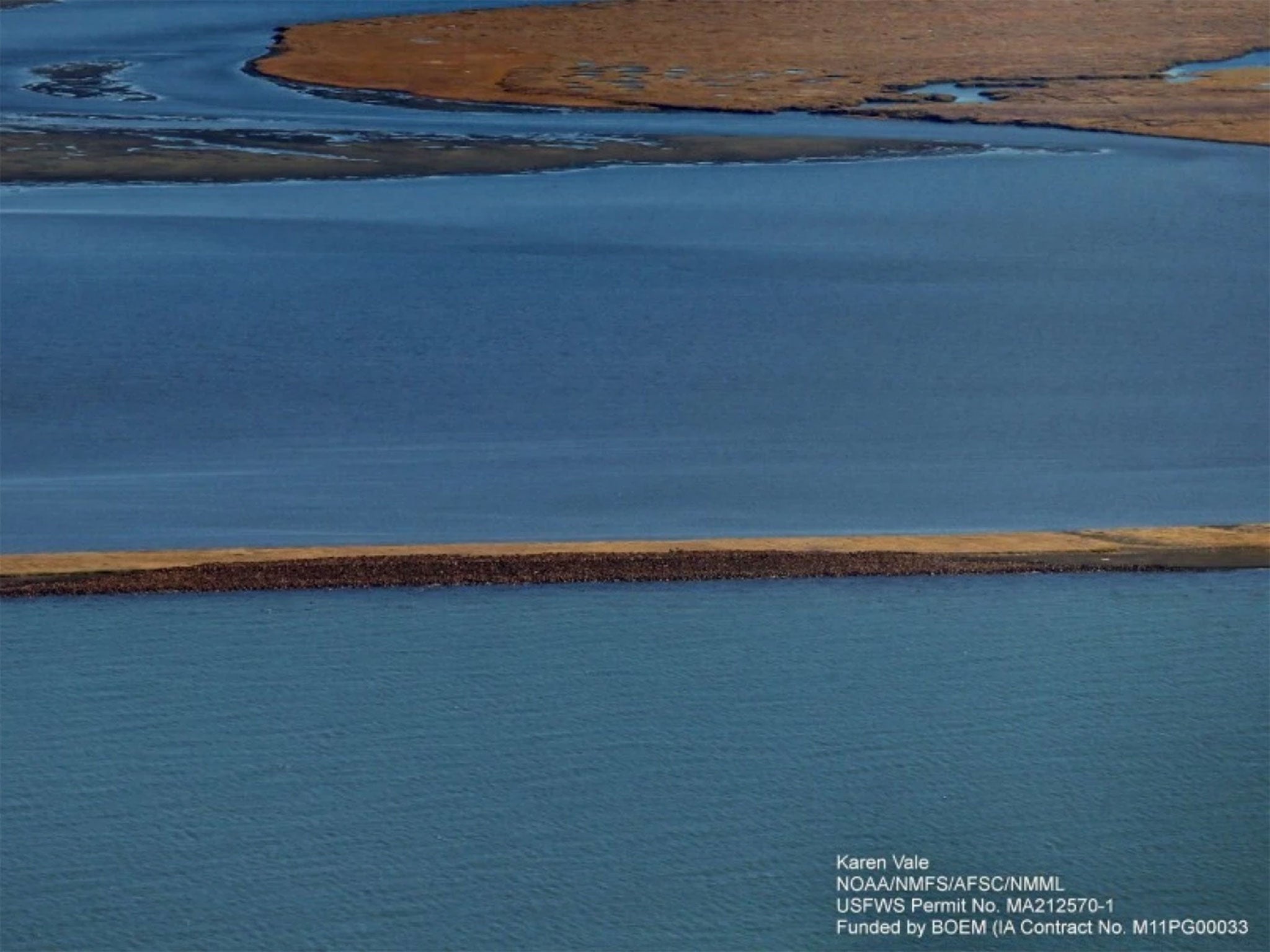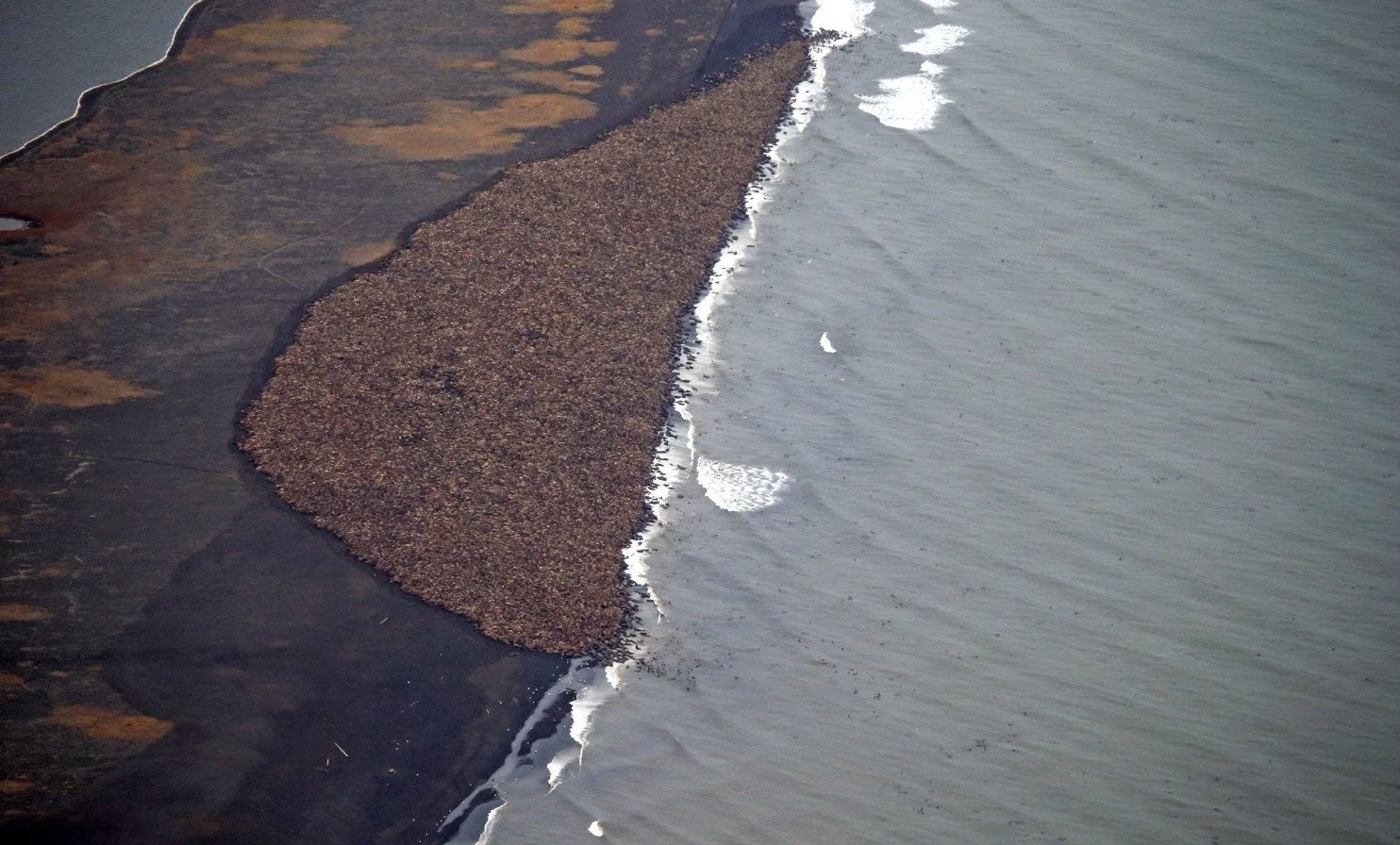This is what it looks like when thousands of walruses have nowhere to go
It's the seventh time in the past nine summers that a haul-out has occurred, thanks to the effects of climate change in the Arctic, which have caused all the sea ice the walruses usually rest on to melt

The US Fish and Wildlife Service has released the first official photo of an ongoing walrus haul-out on the Alaskan coast. The image shows thousands of walruses huddled on the shore near the remote community of Point Lay along the Chukchi Sea.
The photo was taken on September 2 during a survey flight conducted by the Aerial Survey of Arctic Marine Mammals (ASAMM), which is a joint project of the Bureau of Ocean Energy Management and the National Oceanic and Atmospheric Administration.
According to the Fish and Wildlife Service, the aircraft flew within about three miles of the shore at an altitude of 2,000 feet, in keeping with strict government guidelines intended to minimize disturbances to the animals. Consequently, the image is not quite as dramatic as some have been in prior years, such as last year’s haul-out photos, which drew nationwide attention to Point Lay.

The Fish and Wildlife Service has estimated that approximately 35,000 walruses are currently hauled up on shore, a number that rivals last year’s haul-out.
As of 28 August, the service had estimated that only 5,000-6,000 walruses had already gathered, although biologists suspected more would be coming.
The haul-out was first confirmed by the service on 26 August. It’s the seventh time in the past nine summers that a haul-out has occurred, thanks to the effects of climate change in the Arctic, which have caused all the sea ice the walruses usually rest on to melt.
With nowhere else to go, the animals were forced to seek refuge on the coast.
The walruses are likely to remain on shore for another month or so, as sea ice in the region probably won’t start refreezing until October.
Until then, the animals are being closely monitored by local Fish and Wildlife Service officials and residents of Point Lay. Walruses that are crammed onshore together are easily frightened and prone to stampeding into the water, which can cause them to trample and kill the smaller members of their herd.
Such stampedes have led to thousands of fatalities in the past, so officials are eager to make sure the area remains as isolated and free of human disturbances as possible.
“I think the fact that walrus continue to haul out near the community of Point Lay year after year is testament of … the great stewardship role that the community has taken,” said Jonathan Snyder, a Fish and Wildlife Service biologist, at a teleconference on 28 August.
“I would imagine if that were not a safe place, the walrus would not keep returning.”
(C) Washington Post
Join our commenting forum
Join thought-provoking conversations, follow other Independent readers and see their replies
Comments
Bookmark popover
Removed from bookmarks